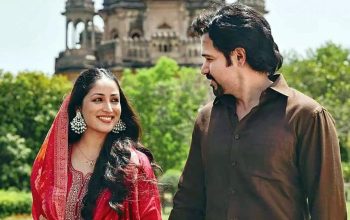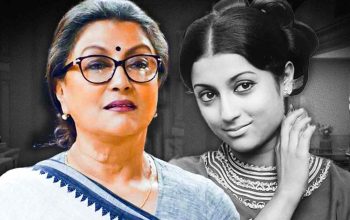Milind Dharmasena
As the world commemorates the 100th birth anniversary of Guru Dutt on July 9, 2025, we remember a man whose art transcended time, language, and generations — a creative genius whose contributions to Indian cinema, music, and storytelling remain unparalleled.
The Filmmaker Who Redefined Hindi Cinema
Born Vasanth Kumar Shivashankar Padukone in Bangalore in 1925, Guru Dutt emerged in the 1950s as a director who brought a rare fusion of realism and lyricism to Hindi cinema. At a time when mainstream films leaned heavily on melodrama and formula, Guru Dutt carved his own path — one that was brave, introspective, and heartbreakingly beautiful.
His directorial works — Baazi (1951), Jaal (1952), Aar Paar (1954), Mr. & Mrs. ’55 (1955), Pyaasa (1957), Kaagaz Ke Phool (1959), Chaudhvin Ka Chand (1960), and Sahib Bibi Aur Ghulam (1962) — weren’t just films. They were meditations on identity, love, failure, and societal hypocrisy. Pyaasa especially stands as a landmark film, telling the story of a disillusioned poet struggling to find meaning and compassion in a commercial world. Today, it is ranked among the greatest films of world cinema.
Guru Dutt’s visual storytelling was pioneering. He introduced techniques in lighting, camera movement, and song picturization that would later become signature styles in Indian filmmaking. His use of shadow and light was often compared to German Expressionist cinema, creating emotional atmospheres that words could never quite match.
Music That Stirred the Soul
One of Guru Dutt’s most lasting legacies lies in the music of his films. He treated songs not as interruptions, but as poetic extensions of the narrative. The result was cinematic magic — scenes where music, lyrics, and visuals fused into pure emotion.
Working closely with music directors like S.D. Burman, Hemant Kumar, and composers like Ravi, as well as lyricists like Sahir Ludhianvi and Kaifi Azmi, he gave us timeless melodies such as:
• “Yeh Duniya Agar Mil Bhi Jaye Toh Kya Hai” (Pyaasa)
• “Waqt Ne Kiya Kya Haseen Sitam” (Kaagaz Ke Phool)
• “Jaane Kya Tune Kahi” (Pyaasa)
• “Chaudhvin Ka Chand Ho” (Chaudhvin Ka Chand)
• “Bichde Sabhi Baari Baari” (Pyaasa)
Each song in his films reflected an inner world — of characters burdened by unspoken love, existential loneliness, or crushed ideals. The music of Guru Dutt’s films remains cherished not just for its melody, but for its haunting emotional resonance.
The Actor with a Poetic Gaze
As an actor, Guru Dutt brought subtlety and intensity to the screen. He didn’t perform — he felt. His expressions were often quiet, his eyes full of stories. Unlike many of his contemporaries, Guru Dutt never exaggerated; instead, he let silence, glances, and body language convey what dialogue could not. Whether as the misunderstood poet in Pyaasa, the fallen filmmaker in Kaagaz Ke Phool, or the supportive husband in Chaudhvin Ka Chand, he brought authenticity and empathy to every role.
A Personal Life of Passion and Pain
Behind the lens and beyond the screen, Guru Dutt’s personal life was one of turbulence and solitude. His marriage to celebrated playback singer Geeta Dutt was marked by both love and conflict. While their partnership produced some of Indian cinema’s most soulful melodies, their relationship suffered under the weight of artistic pressure, emotional distance, and rumors of his closeness to actress Waheeda Rehman.
His struggles with depression and inner conflict were often reflected in his characters. Guru Dutt was known to carry a deep sensitivity — one that saw beauty in pain and art in anguish. On October 10, 1964, at just 39 years old, he was found dead in his Mumbai apartment — an apparent suicide. His death was a tragic loss to Indian cinema, cutting short a career that had already transformed the medium forever.
Legacy Beyond Generations
Even decades after his passing, Guru Dutt remains a cultural icon. His films are taught in international film schools, his visual style studied by cinematographers, and his themes rediscovered by new generations. Kaagaz Ke Phool, initially a commercial failure, is now hailed as a masterpiece — a film so ahead of its time that only history could recognize its brilliance.
In 2002, Sight & Sound magazine listed Pyaasa among the 100 best films of all time. Filmmakers like Martin Scorsese, Satyajit Ray, and Raj Kapoor admired his work, and countless directors continue to cite him as an influence.
Final Word: A Century of Guru Dutt
On his 100th birth anniversary, we remember Guru Dutt not just as a filmmaker, but as an artist who dared to show us the beauty in sorrow, the poetry in silence, and the truth in dreams. His cinema was not escapism; it was reflection. It held a mirror to society, and often, to our own souls.
Guru Dutt’s voice, fragile yet fierce, still speaks — through flickering black-and-white frames, through songs that echo in our hearts, through stories that remain timeless.
He lived short, but he created for eternity.




